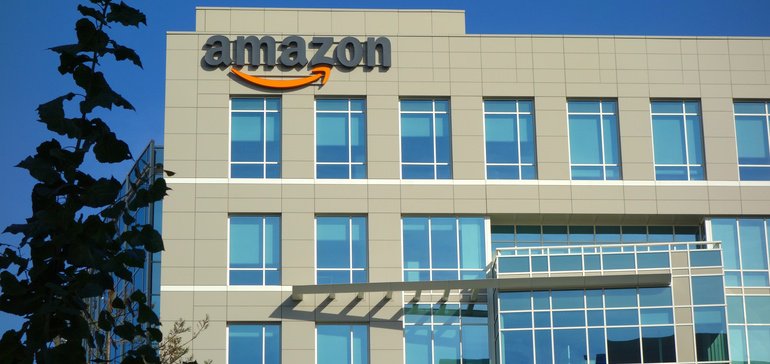Dive Brief:
- Amazon on Thursday said that second quarter net sales surged 39% to $52.9 billion, just missing most analyst estimates.
- But the e-commerce giant wowed Wall Street with a net income rise to $2.5 billion in the quarter, way up from a net income of $197 million in the year-ago period — its largest ever quarterly profit and more than double what analysts anticipated, according to Marketwatch.
- For the third quarter, Amazon expects net sales to rise somewhere between 23% to $54 billion and 31% to $57.5 billion year over year, according to a company press release.
Dive Insight:
Amazon has flipped the script, rewarding investors for their years-long patience.
“Amazon used to post fairly anemic profits. That has now changed as previous investments start to bear fruit,” GlobalData Retail Managing Director Neil Saunders said in comments emailed to Retail Dive. “Over last year, operating income rose by an impressive 375% while net income increased by a phenomenal 1,186%.”
Amazon CFO Brian Olsavsky simply deemed it “a strong quarter.” It’s hardly all about retail sales, however, and Olsavsky said that too. “What I attribute it to is continued strength in … some of our most profitable areas,” he said. “AWS had its third consecutive quarter of accelerating growth. Advertising also had strong growth. We saw better than expected efficiencies in operations, our infrastructure costs and generally all of our fixed costs.”
Saunders also noted that the company’s profits are centered in AWS and North America, with its “international division still in the red to the tune of $494 million.” But that only means that Amazon is all potential abroad, he said.
Amazon included an intriguing caveat regarding its guidance, saying in its press release, “This … assumes, among other things, that no additional business acquisitions, investments, restructurings or legal settlements are concluded.”
While that may hint at plans on the horizon, it’s more likely something of a boast, according to Phil Kafarakis, president of the Specialty Food Association, which represents independent specialty food companies. “These people at Amazon are operating in these huge stratospheric numbers, and they are saying, ‘This is just our core business,'” he told Retail Dive in an interview.
Amazon on Thursday said it launched Echo and Alexa in France, that the screen-enabled Echo Spot launched in India and Japan, and that Echo and Alexa will launch in Italy, Mexico and Spain later this year.
But Kafarakis noted that Amazon mentioned Whole Foods only once, and that there’s evidence that the e-commerce giant is struggling in its first major foray into the brick-and-mortar business. It’s something Amazon will need to address if it’s to complete with Walmart, he said. “This is a whole new thing for them — it’s about the suppliers too. The only thing these guys are missing is supply chain.”
That could lead Amazon to acquire a major supplier like Sysco or U.S. Foodservice. “Then they’re wired overnight to put food anywhere,” Kafarakis said.
But Amazon’s real strengths are its customer focus and innovation, according to Saunders, who does agree that Whole Foods needs more work. “Amazon is investing more than ever in various new ventures which will be capable of delivering future growth,” he said, calling out its PillPack acquisition as “particularly exciting.”
Smart TVs will help Amazon compete in electronics and media, and efforts like Prime Wardrobe will help it grab market share in apparel, he also said. But Saunders dismissed worries that Amazon is becoming a monopoly. “Its profits are too thin, it innovates too much, and it has nowhere near a monopoly market share,” he said. “Its growth has been earned through smart thinking and hard work.”

